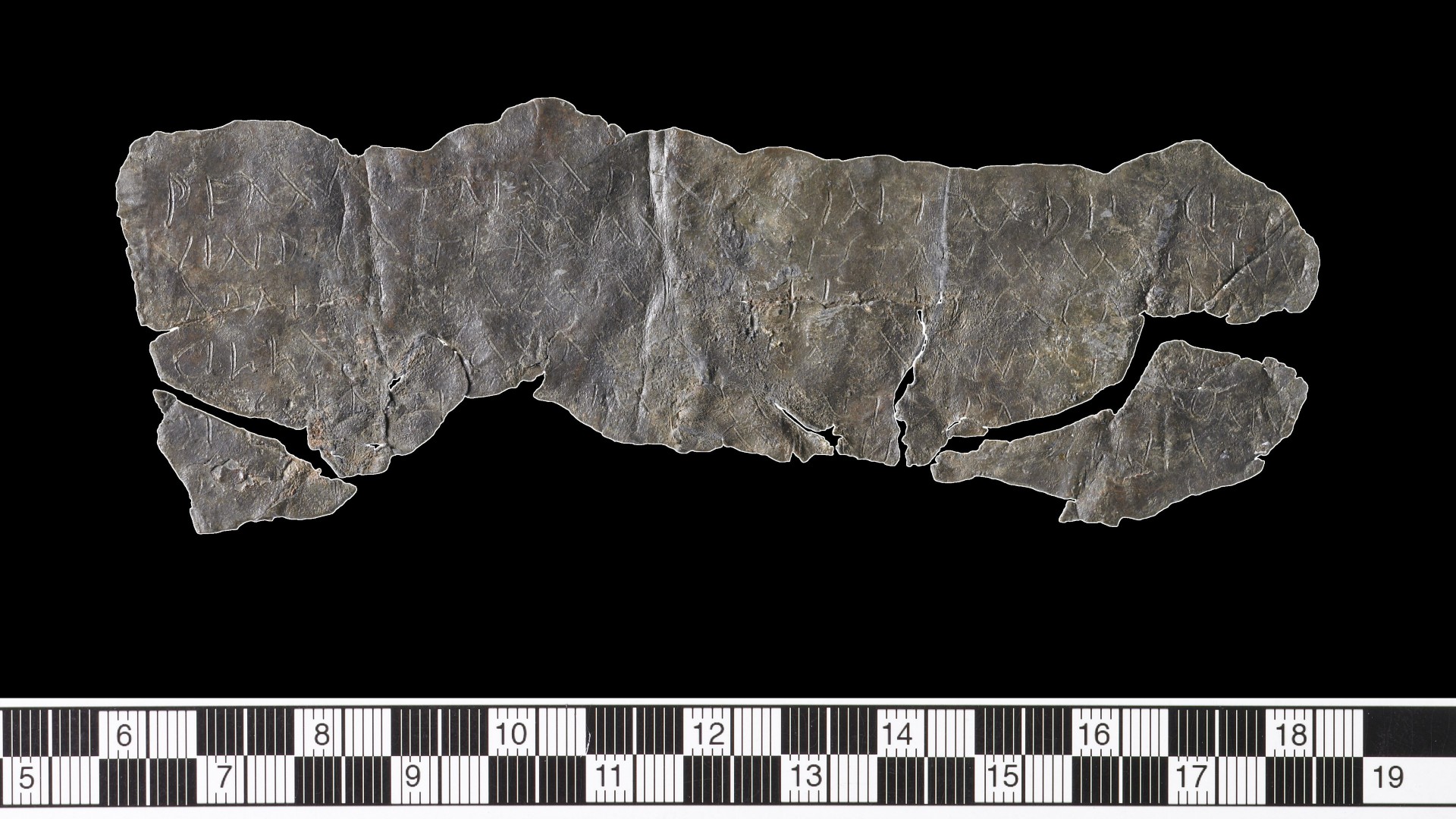Book of Revelation's vision of the apocalypse inspired by pagan curses, researcher claims
The cryptic Book of Revelation in the Christian Bible deliberately uses the language and verbal elements seen in Roman curse tablets, probably in an effort to reinforce its message, one researcher says.

The cryptic language of the Book of Revelation — famous for its exotic imagery, including a red beast with seven heads and a symbolic female figure likened to the evils of Babylon — is deliberately similar to language used in ancient Roman "curse tablets," according to new research.
The ongoing work suggests that the Book of Revelation — a section of the Christian Bible that scholars think was written in the late first century A.D. — attempted to distinguish the budding religion from the paganism of the Roman Empire at that time by phrasing its message in a familiar form that would have reinforced its ominous message.
"My research compiles the evidence of where the curse tablets explain striking features in the Revelation text better than other pre-texts," Michael Hölscher, a researcher in the biblical studies department at Johannes Gutenberg University in Mainz, Germany, told Live Science in an email.
Hölscher is conducting a research project into the similarities between the Book of Revelation and Roman curse tablets for Germany's national research agency (DFG).
He said a key example from the Book of Revelation is that God is spoken of "binding" and "releasing" Satan. The same terminology is used in Roman curse tablets, which are also known as "defixiones" — Latin for "bindings" — because they often "bind" or compel their victim to perform a certain action.
Another example is that Revelation describes enemies with all-inclusive formulas, as curse tablets do: "whether the person is male or female, free or slave … such formulations also occur in the Book of Revelation," Hölscher said. For example, the 13th chapter of Revelation prophesies that a "mark of the beast" will be imposed on "all, both small and great, rich and poor, free and slave…"
Other scholars, however, disagree, calling a link between the two "tenuous."
Get the world’s most fascinating discoveries delivered straight to your inbox.
Related: 7 unusual ancient Roman superstitions
Book of Revelation
The Book of Revelation — also known as Revelation, the Revelation to John, or the Apocalypse of John — is interpreted by most modern scholars as an attempt to prophesize the end of the world and the second coming of Christ. According to Revelation, nonbelievers would be cast into hell, while Christians would ascend to heaven during the second coming.
Because someone named John wrote one of the four Gospels, it was assumed that he also wrote the Revelation to John. But according to the scholar Bart Ehrman, writing in "The New Testament: A Historical Introduction to the Early Christian Writings" (Oxford University Press, 2011) the author of Revelation is now thought to be a man dubbed John of Patmos, who wrote it in about A.D. 96 after seeing or hearing about the Roman destruction of Jerusalem in A.D. 70.
The Book of Revelation describes the end of the world — the Apocalypse — with images that would have been familiar to early Christians. It also introduces the "number of the beast," likely a reference to the Roman emperor Nero, whose name can be rendered in Hebrew numerology as "666" and who was infamous for brutally persecuting Christians.
Hölscher said it's not only the phrasing in Revelation that is inspired by Roman curse tablets but also the actions it describes — for example, an angel casts a great stone to destroy Babylon, which is a type of curse ritual.
The influence of curse tablets is also evident in verbal elements derived from the practice of curse writing, Hölscher said. For example, figures associated with deities in Revelation often have the names of those deities written on their bodies — the followers of the beast, for example, wear the beast's name or number on their hands or foreheads.
Curse tablets


Curse tablets were widespread throughout the Roman world, although they were considered a form of black magic and forbidden by law. They consisted of a curse to harm an enemy — generally as bloodcurdling as possible — usually inscribed on a thin sheet of lead, which was then deposited in a place where only the gods might see it, such as a crack in a wall or in a pagan temple. More than 100 curse tablets have been found in a temple in the English city of Bath, which was a center of healing during the Roman period.
But the similarities between curse tablets and Revelation do not convince all experts. "The proposed links between Roman curse tablets and the phraseology of the Book of Revelation are at best tenuous," Ken Dark, an archaeologist at King's College London who wasn't involved in the study, told Live Science in an email.
He noted that even Hölscher admits that no direct quotations from curse tablets have been identified in the Book of Revelation, and "the examples of parallels given so far are, to say the least, debatable."
Tom Metcalfe is a freelance journalist and regular Live Science contributor who is based in London in the United Kingdom. Tom writes mainly about science, space, archaeology, the Earth and the oceans. He has also written for the BBC, NBC News, National Geographic, Scientific American, Air & Space, and many others.



